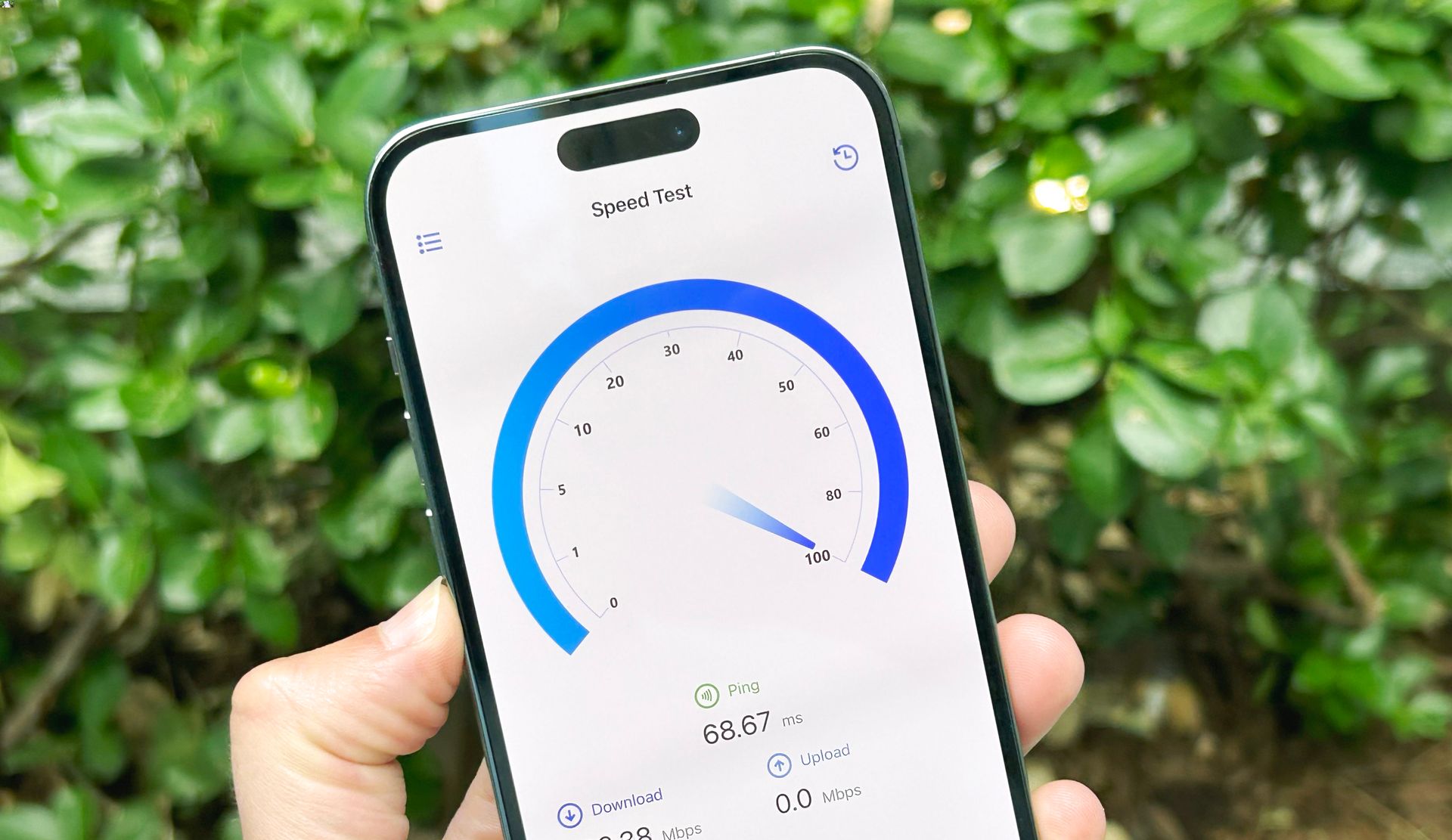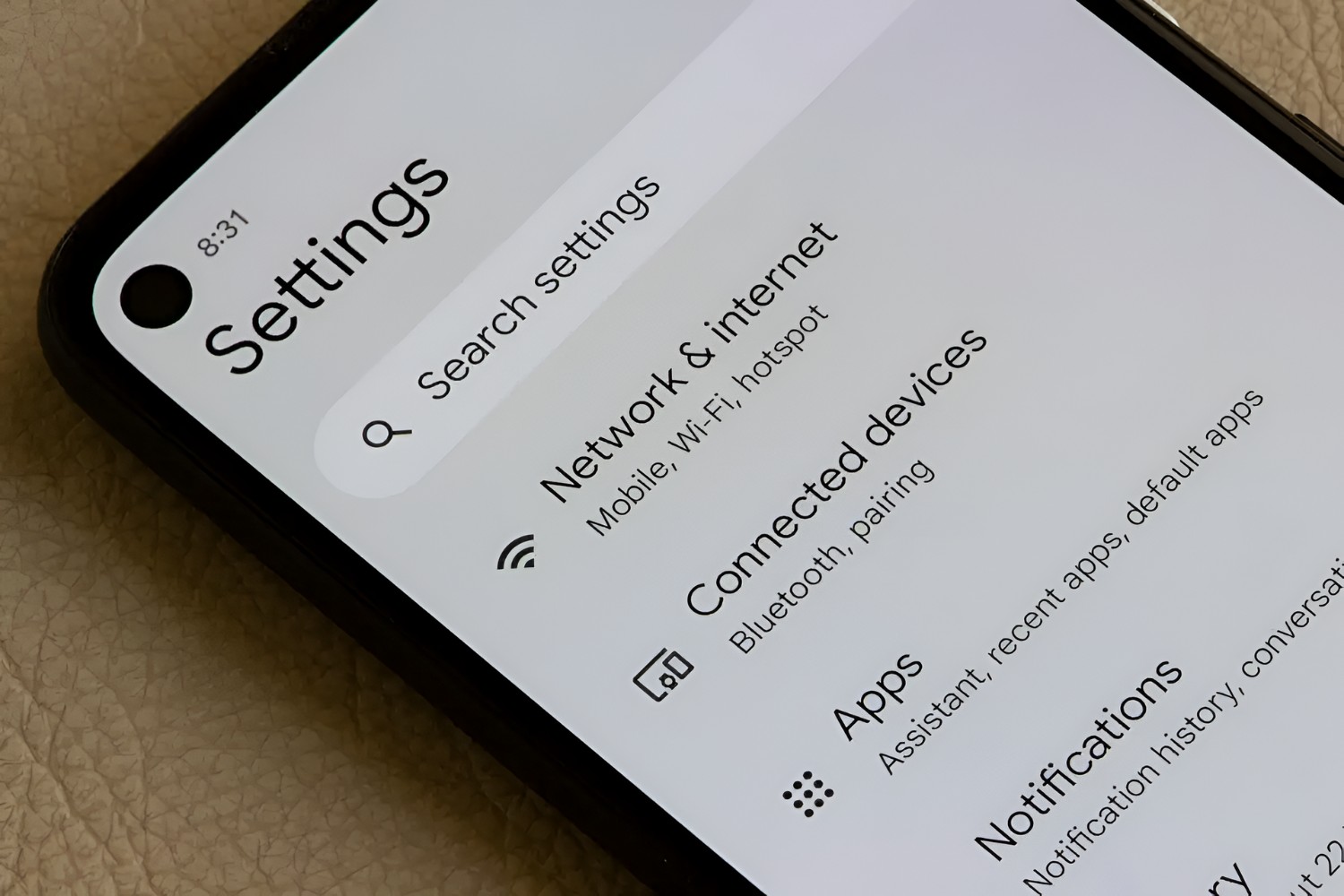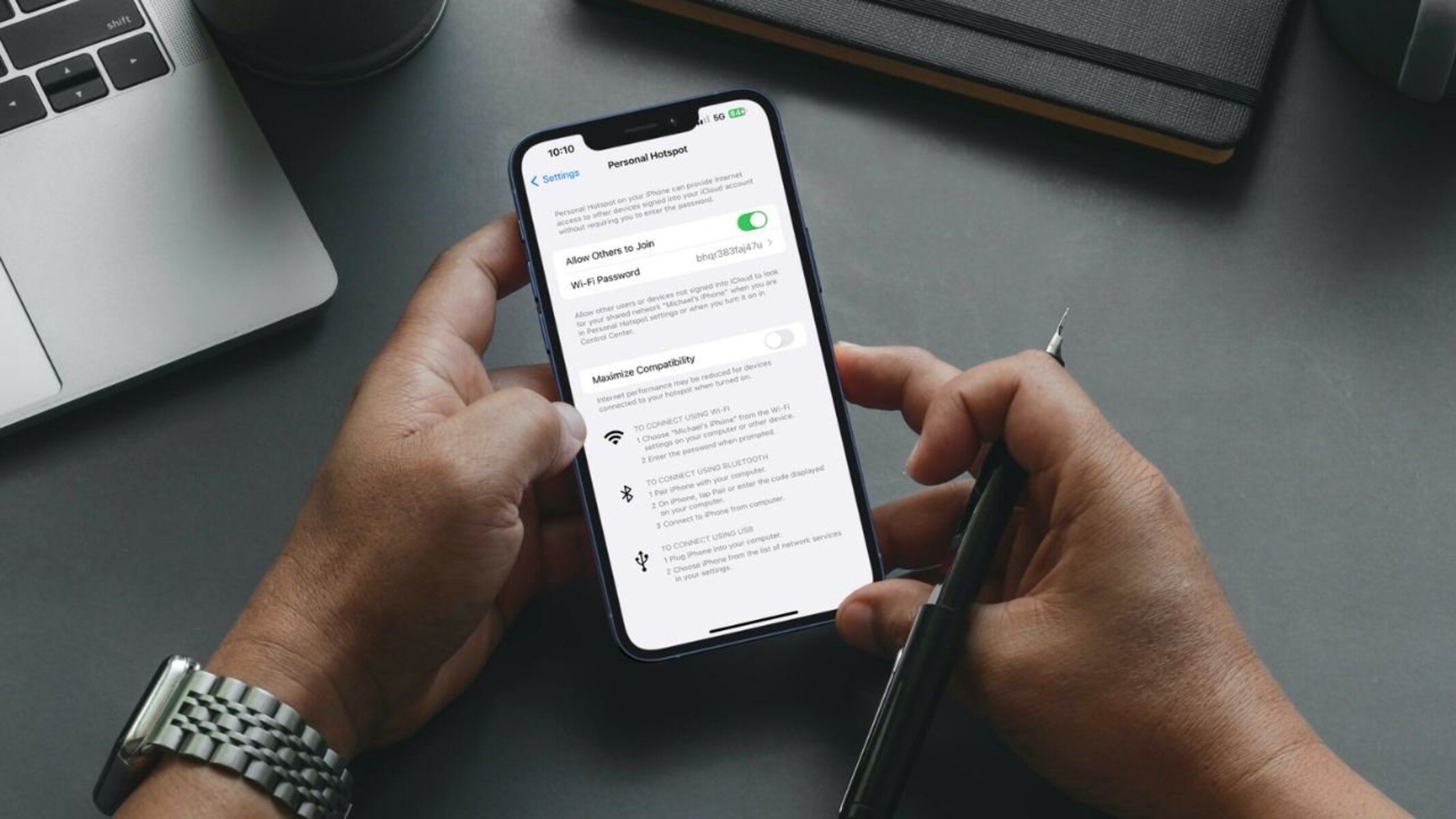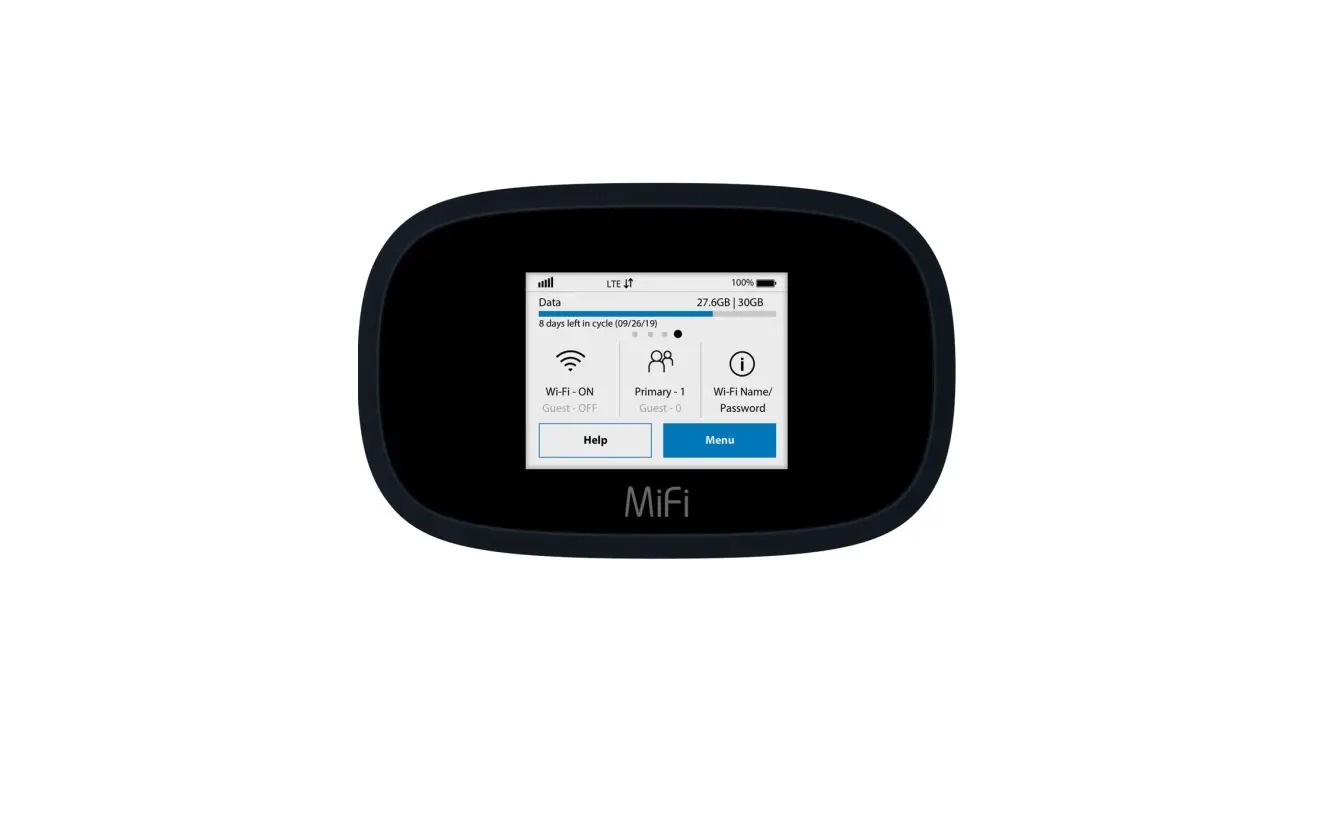Introduction
In today's digital age, the use of hotspots has become increasingly prevalent. Whether in a bustling coffee shop, a corporate office, or the comfort of one's home, hotspots provide convenient access to the internet for a myriad of devices. However, the unrestricted use of hotspots can lead to various issues, including excessive data consumption, compromised network security, and diminished overall network performance.
As the demand for internet connectivity continues to surge, it is crucial for individuals and organizations to understand the impact of hotspot usage and the necessity of implementing effective limitation strategies. By doing so, they can not only optimize network performance but also ensure a secure and equitable distribution of resources.
In this article, we will delve into the nuances of hotspot usage, explore the significance of limiting hotspot usage, and elucidate effective strategies for managing and regulating hotspot access. By gaining a comprehensive understanding of these aspects, readers will be better equipped to navigate the complexities of hotspot management and make informed decisions to enhance their network efficiency and security.
Understanding Hotspot Usage
Hotspots serve as access points that enable devices to connect to the internet wirelessly. They are commonly found in public spaces, such as cafes, airports, and hotels, and are also utilized in private settings, including homes and offices. The widespread use of hotspots has revolutionized the way people access the internet, providing unparalleled convenience and flexibility.
Hotspot usage encompasses a wide range of activities, including web browsing, streaming multimedia content, accessing cloud-based applications, and conducting online transactions. With the proliferation of smart devices and the increasing reliance on digital connectivity, the demand for hotspot access has soared, leading to a surge in data consumption and network traffic.
Understanding hotspot usage entails recognizing the diverse array of devices that rely on these access points. Smartphones, tablets, laptops, and IoT (Internet of Things) devices all leverage hotspots to access the internet, creating a complex ecosystem of interconnected devices vying for network bandwidth and resources.
Moreover, the nature of hotspot usage varies across different environments. In public settings, such as cafes and airports, users often engage in casual web browsing, social media interactions, and streaming content. In contrast, corporate environments may witness a more intensive utilization of hotspots, with employees accessing cloud-based productivity tools, participating in virtual meetings, and transferring large volumes of data.
The understanding of hotspot usage also encompasses the implications of unrestricted access. Unmanaged hotspot usage can lead to network congestion, reduced internet speeds, and compromised security. Additionally, excessive data consumption can result in inflated operational costs for businesses and strained network resources for service providers.
By comprehending the multifaceted nature of hotspot usage, individuals and organizations can gain insights into the challenges and opportunities associated with managing and regulating hotspot access. This understanding forms the foundation for devising effective strategies to optimize hotspot usage, mitigate potential risks, and ensure a seamless and secure internet experience for all users.
In the subsequent sections, we will delve into the importance of limiting hotspot usage and explore actionable strategies to achieve this objective. Through a holistic approach to hotspot management, individuals and organizations can harness the full potential of wireless connectivity while safeguarding network integrity and performance.
Importance of Limiting Hotspot Usage
The importance of limiting hotspot usage cannot be overstated in today's dynamic digital landscape. Unrestricted access to hotspots can lead to a myriad of challenges, ranging from network congestion and diminished performance to security vulnerabilities and exorbitant operational costs. By imposing effective limitations on hotspot usage, individuals and organizations can mitigate these issues and unlock a host of benefits.
One of the primary reasons for limiting hotspot usage is to optimize network performance. Unregulated access to hotspots can result in network congestion, leading to sluggish internet speeds and suboptimal user experiences. By implementing restrictions on data consumption and bandwidth allocation, network administrators can ensure a more equitable distribution of resources, thereby enhancing overall network performance and responsiveness.
Moreover, limiting hotspot usage is essential for safeguarding network security. Uncontrolled access to hotspots can expose networks to various security threats, including unauthorized access, data interception, and malicious activities. By imposing restrictions on hotspot usage, such as implementing authentication mechanisms and encryption protocols, organizations can fortify their network defenses and mitigate the risk of cyber attacks and data breaches.
From a financial perspective, limiting hotspot usage can yield substantial cost savings. Unrestrained data consumption can lead to inflated operational expenses, particularly for businesses and service providers. By setting data limits, monitoring usage patterns, and enforcing fair usage policies, organizations can effectively manage their network resources and contain operational costs without compromising the quality of service provided to users.
Furthermore, by imposing limitations on hotspot usage, organizations can promote responsible and efficient utilization of network resources. This not only fosters a culture of conscientious internet usage but also ensures that critical business applications and services receive the necessary bandwidth and priority, thus optimizing productivity and operational efficiency.
In essence, the importance of limiting hotspot usage lies in its ability to optimize network performance, enhance security, contain operational costs, and promote responsible usage. By embracing effective limitation strategies, individuals and organizations can harness the full potential of hotspots while mitigating the challenges associated with unregulated access. In the subsequent sections, we will delve into actionable strategies for managing and regulating hotspot usage, empowering readers to proactively address the complexities of wireless connectivity and network management.
Effective Limitation Strategies
Implementing effective limitation strategies is paramount to managing and regulating hotspot usage in diverse environments. By leveraging a combination of technical controls, usage policies, and monitoring mechanisms, individuals and organizations can ensure a balanced and secure distribution of network resources while promoting responsible internet usage.
Setting Data Limits
One of the fundamental strategies for limiting hotspot usage is the implementation of data limits. By defining specific thresholds for data consumption, network administrators can prevent excessive usage and mitigate the risk of network congestion. This can be achieved through network management tools and hardware configurations that allow for granular control over data allocation. For instance, bandwidth shaping and Quality of Service (QoS) mechanisms can be employed to prioritize critical applications and enforce data caps for non-essential activities. Additionally, the adoption of data monitoring and reporting tools enables real-time visibility into data usage patterns, empowering administrators to proactively address potential bottlenecks and optimize resource allocation.
Implementing Time Restrictions
Incorporating time restrictions is another effective strategy for managing hotspot usage. By defining access schedules and time-based usage policies, organizations can regulate the availability of hotspots during specific intervals, thereby preventing prolonged and non-essential usage. This approach is particularly relevant in environments where access needs to be aligned with operational hours or specific usage scenarios. By leveraging centralized authentication and access control mechanisms, such as RADIUS (Remote Authentication Dial-In User Service) servers and captive portal solutions, administrators can enforce time-based restrictions with precision, ensuring that network resources are utilized judiciously and in accordance with organizational requirements.
Monitoring and Enforcing Usage Policies
Comprehensive monitoring and enforcement of usage policies are integral components of effective limitation strategies. Leveraging network monitoring tools and analytics platforms, administrators can gain insights into usage patterns, identify anomalies, and enforce adherence to established policies. Real-time alerts and notifications can be configured to notify administrators of potential breaches or excessive usage, enabling timely intervention and corrective actions. Furthermore, the implementation of user authentication and access controls, coupled with user-specific policies and quotas, facilitates the enforcement of fair usage guidelines and promotes accountability among hotspot users. This proactive approach not only ensures compliance with usage policies but also fosters a culture of responsible internet usage within the organization.
By embracing these effective limitation strategies, individuals and organizations can proactively address the complexities of hotspot management and optimize network performance while safeguarding security and containing operational costs. The seamless integration of technical controls, usage policies, and monitoring mechanisms empowers administrators to strike a balance between accessibility and regulation, thereby fostering a secure and efficient wireless connectivity environment.
Setting Data Limits
Setting data limits is a fundamental and effective strategy for managing and regulating hotspot usage in diverse environments. By defining specific thresholds for data consumption, network administrators can prevent excessive usage and mitigate the risk of network congestion. This approach is particularly crucial in environments where limited bandwidth or data caps are in place, as it enables administrators to optimize resource allocation and ensure a fair distribution of network resources among users.
To implement data limits, network administrators can leverage a range of technical controls and network management tools. Bandwidth shaping and Quality of Service (QoS) mechanisms play a pivotal role in prioritizing critical applications and enforcing data caps for non-essential activities. By configuring these tools, administrators can allocate bandwidth based on predefined policies, ensuring that essential services receive the necessary resources while non-critical activities are subject to defined data limits.
Moreover, the adoption of data monitoring and reporting tools provides real-time visibility into data usage patterns, enabling administrators to proactively address potential bottlenecks and optimize resource allocation. These tools empower administrators to monitor data consumption at a granular level, identify trends, and anticipate potential capacity constraints. By gaining insights into data usage patterns, administrators can make informed decisions regarding resource allocation and adjust data limits as necessary to align with organizational requirements.
In addition to technical controls, hardware configurations also play a pivotal role in implementing data limits. Network devices and access points can be configured to enforce data caps at the network level, ensuring that individual devices or users do not exceed predefined data thresholds. This granular control over data allocation enables administrators to maintain network performance and prevent disproportionate data consumption that could lead to network congestion and degraded user experiences.
Ultimately, setting data limits is a proactive and essential strategy for managing hotspot usage. By leveraging technical controls, network management tools, and hardware configurations, administrators can optimize resource allocation, prevent network congestion, and ensure a fair and equitable distribution of network resources. This approach not only enhances network performance but also promotes responsible and efficient utilization of hotspot resources, aligning with the overarching goal of fostering a secure and efficient wireless connectivity environment.
Implementing Time Restrictions
Implementing time restrictions is a pivotal strategy for managing and regulating hotspot usage, particularly in environments where access needs to be aligned with operational hours or specific usage scenarios. By defining access schedules and time-based usage policies, organizations can exert precise control over the availability of hotspots, thereby preventing prolonged and non-essential usage.
The implementation of time restrictions involves leveraging centralized authentication and access control mechanisms to enforce access schedules. For instance, RADIUS (Remote Authentication Dial-In User Service) servers and captive portal solutions play a crucial role in defining time-based access policies and enforcing them at the network level. By integrating these mechanisms with existing network infrastructure, administrators can establish granular control over hotspot availability, ensuring that access is aligned with organizational requirements and operational considerations.
Furthermore, the enforcement of time restrictions can be tailored to accommodate diverse user groups and usage scenarios. For instance, in corporate environments, time-based access policies can be configured to align with business hours, ensuring that hotspot availability corresponds to operational schedules. This approach not only promotes efficient resource utilization but also mitigates the risk of non-essential usage during off-peak hours, thereby optimizing network performance and responsiveness.
In public settings, such as cafes and airports, the implementation of time restrictions can be tailored to align with service hours and customer traffic patterns. By dynamically adjusting access schedules based on peak periods and operational considerations, organizations can ensure that hotspot availability is aligned with customer demand, thereby optimizing the utilization of network resources and enhancing the overall user experience.
Moreover, the integration of time-based usage policies with user authentication and access controls enables administrators to enforce access restrictions with precision. By defining user-specific access schedules and aligning them with organizational policies, administrators can promote responsible internet usage and ensure that network resources are utilized judiciously.
In essence, implementing time restrictions is a strategic approach to managing hotspot usage, enabling organizations to align access with operational requirements, optimize resource utilization, and promote responsible internet usage. By leveraging centralized authentication mechanisms, access controls, and time-based policies, administrators can establish a balanced and secure distribution of network resources, fostering a seamless and efficient wireless connectivity environment.
Monitoring and Enforcing Usage Policies
Monitoring and enforcing usage policies are integral components of effective limitation strategies for managing hotspot usage. By leveraging advanced network monitoring tools and analytics platforms, administrators can gain real-time insights into usage patterns, identify anomalies, and enforce adherence to established policies. These proactive measures are essential for maintaining network integrity, optimizing resource allocation, and promoting responsible internet usage within organizations.
Comprehensive monitoring of hotspot usage entails the continuous assessment of data consumption, bandwidth utilization, and user activity. Network monitoring tools provide administrators with a holistic view of network performance, enabling them to identify potential bottlenecks, anticipate capacity constraints, and proactively address emerging issues. Real-time visibility into usage patterns empowers administrators to make informed decisions regarding resource allocation, ensuring that critical applications and services receive the necessary bandwidth and priority.
Furthermore, the implementation of user authentication and access controls plays a pivotal role in enforcing usage policies. By defining user-specific policies, quotas, and access privileges, administrators can regulate hotspot usage with precision, ensuring that users adhere to established guidelines and fair usage policies. This proactive approach fosters a culture of accountability and responsible internet usage, aligning with the overarching goal of optimizing network performance and security.
In addition to monitoring, the enforcement of usage policies involves the implementation of real-time alerts and notifications to notify administrators of potential breaches or excessive usage. These proactive notifications enable administrators to intervene promptly, address policy violations, and take corrective actions to mitigate the impact on network performance and security. By leveraging automated alerts and notifications, administrators can maintain a proactive stance in enforcing usage policies, thereby fostering a secure and efficient wireless connectivity environment.
Moreover, the integration of usage policy enforcement with reporting and analytics tools enables administrators to track compliance, identify trends, and refine policies based on usage patterns. By gaining insights into user behavior and adherence to usage policies, administrators can iteratively optimize policies to align with evolving organizational requirements and network dynamics.
In essence, monitoring and enforcing usage policies are essential for maintaining network integrity, optimizing resource allocation, and promoting responsible internet usage. By leveraging advanced monitoring tools, user authentication mechanisms, and proactive enforcement measures, administrators can establish a balanced and secure distribution of network resources, fostering a seamless and efficient wireless connectivity environment.
Conclusion
In conclusion, the effective management and regulation of hotspot usage are pivotal in today's digital landscape, where the demand for wireless connectivity continues to surge. By understanding the multifaceted nature of hotspot usage and the implications of unregulated access, individuals and organizations can proactively address the challenges associated with network performance, security, and operational costs. The strategies for limiting hotspot usage, including setting data limits, implementing time restrictions, and monitoring and enforcing usage policies, offer a comprehensive framework for optimizing network performance, safeguarding security, and promoting responsible internet usage.
The implementation of data limits enables administrators to prevent excessive data consumption, mitigate network congestion, and ensure a fair distribution of resources among users. By leveraging technical controls, network management tools, and hardware configurations, organizations can optimize resource allocation and contain operational costs without compromising the quality of service provided to users.
Similarly, the incorporation of time restrictions allows organizations to align hotspot availability with operational hours and specific usage scenarios, fostering efficient resource utilization and enhancing the overall user experience. The integration of centralized authentication mechanisms, access controls, and time-based policies empowers administrators to establish a balanced and secure distribution of network resources, thereby optimizing network performance and responsiveness.
Furthermore, the comprehensive monitoring and enforcement of usage policies are instrumental in promoting responsible internet usage and maintaining network integrity. By leveraging advanced network monitoring tools, user authentication mechanisms, and proactive enforcement measures, administrators can foster a culture of accountability and ensure compliance with established usage policies, thus promoting a secure and efficient wireless connectivity environment.
In essence, the effective limitation strategies discussed in this article offer a holistic approach to managing and regulating hotspot usage, empowering individuals and organizations to navigate the complexities of wireless connectivity while mitigating the challenges associated with unregulated access. By embracing these strategies, readers can proactively optimize network performance, fortify network security, and promote responsible internet usage, thereby fostering a seamless and efficient wireless connectivity environment.

























